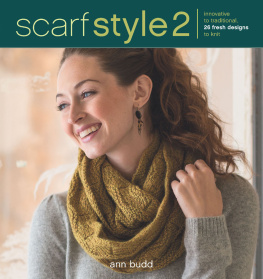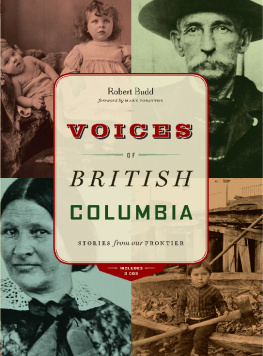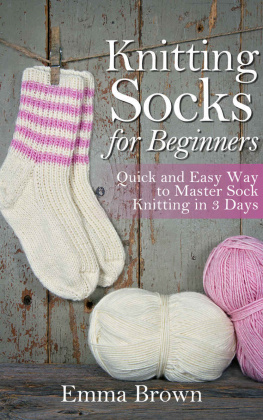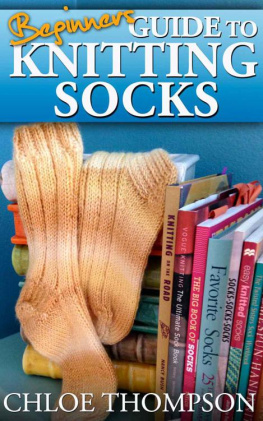Sock
Knitting
MASTER CLASS
Innovative Techniques + Patterns
from Top Designers
Ann Budd

For sock knitters everywhere who continue to think up good designs and techniques.
The masters of this book are the designers who so generously shared their sock-knitting expertise: Cookie A, Kathryn Alexander, Vronik Avery, Cat Bordhi, Nancy Bush, Evelyn A. Clark, Chrissy Gardiner, Priscilla Gibson-Roberts, Anne Hanson, Eunny Jang, Melissa Morgan-Oakes, Deborah Newton, Clara Parkes, Meg Swansen, and Anna Zilboorg. Thank you for providing so many ways to make feet warm and comfortable.
Equally important are the makers of the yarn. Yarns for the socks in this book were contributed by Brown Sheep Company, Cascade Yarns, Classic Elite Yarns, Elemental Affects, Fleece Artist, Kathryn Alexander Kits, Knitting Fever Inc., Lornas Laces, Pagewood Farm, Quince & Company, Satakieli, Schaefer Yarn, Shalimar Yarns, Simply Socks Yarn Company, and String Theory. Without your yarns, there would be so much less to enjoy in handknitted footwear.
For making this book a visual treat, thanks go to Joe Hancock for his mastery of light and composition, Carol Beaver for her keen style sense, models Sheila Baldwin, Boo Edwards, Lindsay Hudson, and Kirsten Warner for their patience and good humor, illustrators Gayle Ford and Ann Swanson for clear drawings, Julia Boyles for an excellent layout and design, and Liz Quan for ensuring high standards every step of the way.
Thanks also to Interweave for believing in this book, to Anne Merrow for expert advice and guidance, to Lori Gayle for ensuring the instructions are clear and correct, and to Katherine Jackson for perfecting all the files and getting everything to the printer on time.
Special thanks go to Jane Patrick and Barry Schacht for opening their home and garden for the photo shoot.

CONTENTS
Cookie A
Nancy Bush
Anne Hanson
Vronik Avery
Deborah Newton
Evelyn A. Clark
Meg Swansen
Nancy Bush
Ann Budd
Chrissy Gardiner
Kathryn Alexander
Priscilla Gibson-Roberts
Eunny Jang
Melissa Morgan-Oakes
Anna Zilboorg
Cat Bordhi
Ann Budd

For years, my favorite knitting project has been socks. Besides enjoying the portability and relatively quick gratification, I continue to marvel at the magical way the heel turns into something that fits so beautifully.
For years now, Ive worn only handknitted socks because they look and feel so good. Although I often fall back on a basic pattern when knitting socks for myself, the number of innovative and exciting designs continues to astonish and inspire me, which is how this book came to be.
For Sock Knitting Master Class, I asked fifteen renowned sock knitters and experts to contribute their designs and sock-knitting knowledge. In addition to the spectacular patterns, youll learn a variety of design approaches and techniques that will provide the foundation for creating beautiful socks of your own. While some designers begin by choosing a skein of yarn for its color, fiber content, or structure, then design a sock that makes the most of those properties, others begin with an idea for a particular stitch or color pattern. Still others sketch and doodle until something speaks to them, then they find the appropriate yarn and work out filler stitches as necessary to translate their ideas into wearable socks.
However they begin, the most successful sock designs follow the Bauhaus principle that form follows function. In socks, this means that each partcuff, leg, heel, instep, sole, and toehas a pleasing design that accomplishes the necessary function. The true art in designing comes from the integration of the different parts into an overall plan that is greater than the sum of its individual parts. For many designers, this integration is the result of trial and errorexcellent design usually requires some amount of ripping out and making adjustments.
The patterns in this book are organized by direction of constructiontop down followed by toe up. Within each construction type youll find an assortment of color and texture techniquesstripes, slip stitches, color stranding, intarsia, entrelac, lace, cables, and traveling stitchesand an assortment of heel and toe shapings. Within each pattern youll find sidebar boxes that highlight design principles, special techniques, and (my favorite) a description by the esteemed Clara Parkes of the type of yarn best suited to each design. Even if you dont plan to knit every pair of socks in this book, I encourage you to take a few minutes to read all the sidebar boxes. They give valuable tips for design and execution, no matter how a sock is knitted.
Like all practical things, good design takes into account both form (or shape) and function. Socks need to fit the human foot comfortably and withstand friction caused by walking and rubbing inside shoes. A well-designed sock accomplishes all of this and is interesting to look at as well.
The best way to determine what size to make your sock is to wrap a tape measure around the widest part of your foot, pulling the tape snug, but not tight ( ) . If you are knitting socks as a gift, use the table below to get a general idea of foot size based on shoe size. Keep in mind that a sock should have a bit of negative ease so that the stitches stretch somewhat around the foot.
But theres more to good sock design than just getting the right fit.

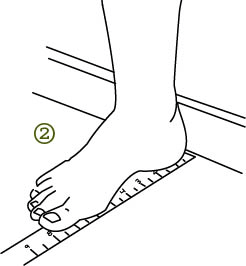
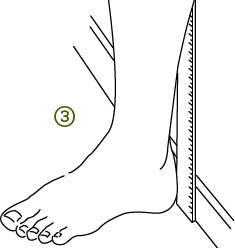
Sock Size as a Function of Shoe Size
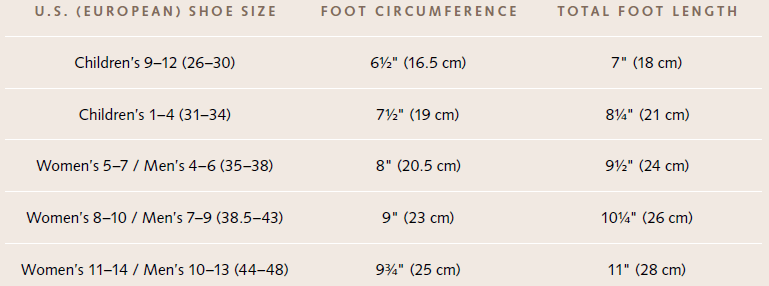

FRENCH MARKET SOCKS,
Socks are most comfortable if they have enough stretch to hug (but not bind) the leg and instep. To ensure maximum elasticity, many designers include some sort of ribbed component on the leg and instep. You also want to take into account how a sock will fit in a shoe. While highly textured cable patterns can look lovely around the leg, they will add bulk at the back of the heel and along the instep that can be potentially uncomfortable inside a shoe. Therefore, plan to end bulky patterns at the ankle. The bottom of the foot is another place where comfort is key. The sole of a sock should be smooth and soft. Because uneven stitches or texture patterns can be annoying to sensitive feet, the bottoms of most socks are worked in plain stockinette stitch. The toe should be wide enough to accommodate the toes without bagging or binding. This is an area that can be tight in a shoe so you want to be cautious about adding texture in this area as welllike the sole, most designers work the toes in stockinette stitch.


